If you've read the tales of " Uhtred of Bebbanburgh" in the Last Kingdom books by Bernard Cornwell, you will have become aware of the turbulent history of the ancient Kingdom of Northumbria and his desire to fight his way back to the far North and reclaim his ancestral home in Bebbanburgh (Bamburgh).
As we are set in the heart of this ancient kingdom, many of these sites are easily reached from a base in Rookhope, Weardale. In this list of sites, as you would expect, many of the places have of course been developed and built over in the years since the time of Alfred the Great.
Alclyt (Auckland, Durham)
The original Auckland is now known as Bishop Auckland, having been the location of the Palace of Durham's Prince Bishops since mediaeval times, at Auckland Castle. There are nearly remains of Binchester Roman Garrison with sections of the Roman Road visible and some fine Roman Baths at the Vinovium site.
Bebbanburgh (Bamburgh, Northumberland)
The massive and impregnable fortress at Bamburgh was built over the centuries, covering nine acres across a rocky plateau. If you take a trip to see this impressive castle, its easy to see why Ida chose this as his base when first settling on the Northumbrian coast.
See a video of Bamburgh castle

(courtesy of Bamburgh Castle)
Bedehal (Beadnell, Northumberland)
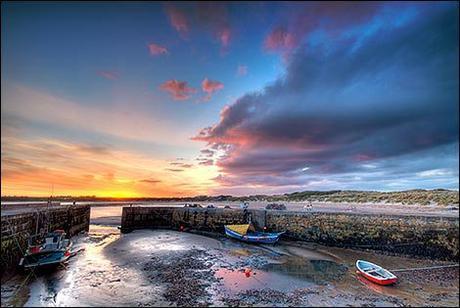
Beadnell is a picturesque fishing village, now largely turned over to weekend homes for marine activities for Newcastle families. Almost all of the current village dates from the C18, including the church which is dedicated to StÆbba, an Anglian saint who was the daughter of one of the Kings of ancient Bernicia.
Caer Ligualid (Carlisle, Cumbria)
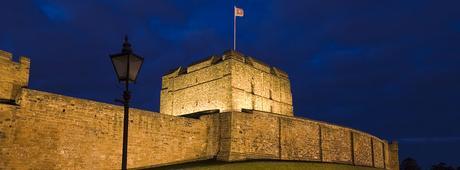
Carlisle still shows a lot of its borderland history with the massive stone walls and gateways attesting to the continued border skirmishing all through the middle ages. Its very name attests to the political strains, coming from the Celtic and knows as Cael Luel in Cumbric or Cathair Luail in Scottish Gaelic.
Cetreht (Catterick, North Yorkshire)
Now best known as the location for the Army depots, the old village of Catterick is a quick detour from the A1, known in Roman times as an army camp and fortress, Cataractonium and mentioned in Ptolemy's Geographia written around AD150. Very little is lest of any ancient remains apart from a Motte and Bailey from the tiome of King Stephen. Bishop Paulinus was known to have baptised local people in the River Swale nearby.
Cuncacester (Chester-le-Street, County Durham)
Situated next to the main A1 North Road between Durham and Newcastle upon Tyne, Chester-le-Street is now a small suburban town.
Dunholm (Durham)
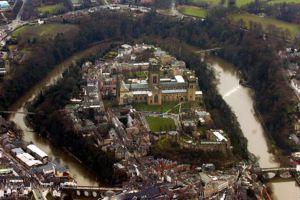
The massively built centre of Durham City still shows how formidable a fortess on this unique site would have been, even as far back as the Ninth Century.
As the photo shows, the river looping around the rocky plateau makes this a highly defensible place. One can imagine when walking around the river path, Uhtred scaling the cliffs in his attack on the fortress which once stood here. What remains is the massive structures of the Cathedral, deservedly a World Heritage Site, and the solid Norman Castle, which is now home to students of University College, Durham University.
Durham is wonderful for day trip visit, to understand the place - and to see the resting places of the Venerable Bede and St Cuthbert himself.
Eoferwic (York)
York is a wonderful city to visit and well documented elsewhere. Known as the Warrior books relate by its Saxon name Eoferwic, and then Jorvik by the Danish settlers, it remained the principal City of the North, continuously from Roman times through to the time of the Industrial Revolution.
Farnea (Farne Islands)
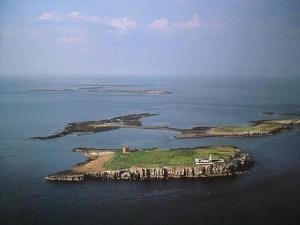
Now home to thousands od Puffins and other seabirds, the isles are one of the most important breeding grounds for some of our less rare birds.Its also possible to visit Cuthberts chapel, which was home to hermits until the C13.
Trips out to the islands can be booked from Seahouses and other local harbours.
Gyruum (Jarrow, Tyne & Wear)
The pre-conquest monastery buildings are still standing at Jarrow. Admittedly added to and the mpartially demolished by Henry VIII at the reformation, you can still get a feeling for how the buildings would have been in Anglo-Saxon times.
Heagostealdes (Hexham, Northumberland)
Hexham is a very appealing country town and very much worth a visit. The ancient layout of the Abbey and castle on the flat land at the top of the bluff show how this was a defensible place in more troubled times. The C12 Abbey still has the
Hocchale (Houghall, County Durham)
There isn nothing of the ancient Hocchale visible now. The original agricultural hamlet was expanded with rows of terraced houses during the C19 when deep coal mine shafts were sunk in the area, to house the miners.
Lindisfarena (Lindisfarne, Northumberland)
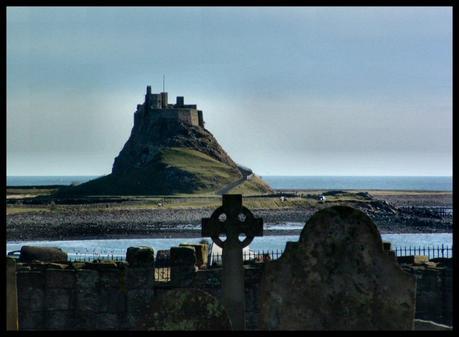
Holy Island is still a very special place with its own unique atmosphere. It is well worth a day trip to experience the place and see the ruins of the Mediaeval Abbey. That was built on the site of the earlier Saxon monastery, which was sacked and burned by waves of Vikings during the times of invasion.
The fictional journey of the body of St Cuthbert as portrayed by Bernard Cornwell, is actually well documented in history. Simeon of Durham wrote of a Uhtred the Bold (who was actually an Ealdorman in the time just leading up to the Norman conquest) who helped transport the body of Cuthbert to his resting place in the Galilee Chapel of Durham Cathedral.
Ohnripum (Ripon, North Yorkshire)
Ripon is now a very cosy city dominated by the beautiful Cathedral, in fact the third smalled city in Britain. Originally founded by St Wilfrid in the time of Anglian Northumbria, it was ever a backwater, though of course settled by invading Danes and then Normans.
Thresk (Thirsk, North Yorkshire)
A small market town near where the A1 and A19 now meet, almost nothing is evident of its history. It grew from a settlement in Saxon times, and notably was gifted to the Norman Hugh, son of Baldric.
The Last Kingdom
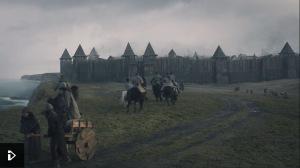
The Vikings invading near Bebbanburgh
The BBC TV Series, The Last Kingdom is currently proving a big hit in the ratings with viewings on BBC2 on Thursday evenings. See the BBC website for the programmes here.
The books are all available from Amazon and other booksellers. The Series (so far) is:


















